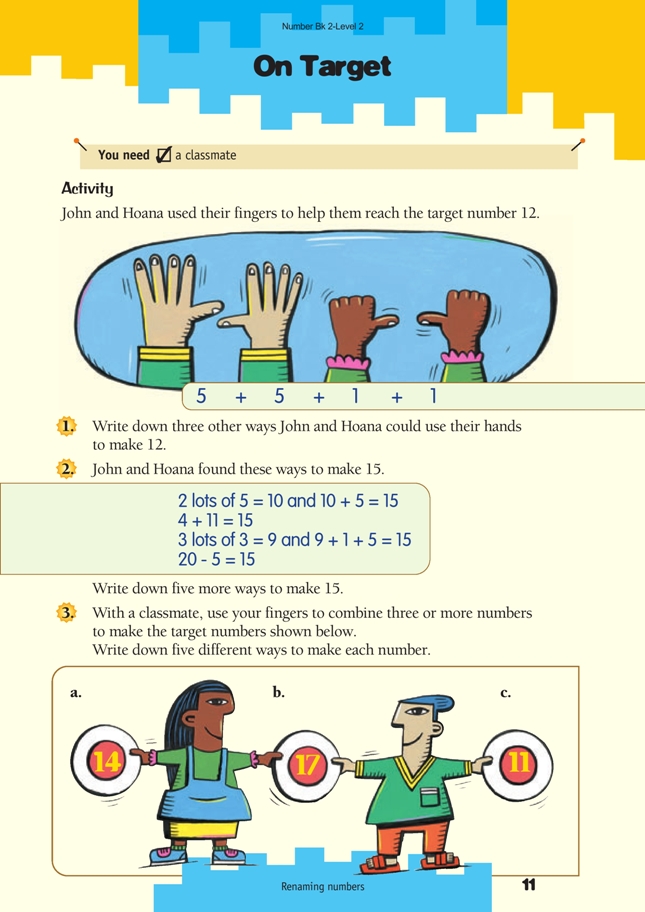This is a level 2 number activity from the Figure It Out series. It relates to Stage 5 of the Number Framework.
A PDF of the student activity is included.
Click on the image to enlarge it. Click again to close. Download PDF (213 KB)
explore different mental strategies for addition
A classmate
This activity is designed to encourage students to find more than one way to solve problems. It focuses on the students sharing and verbalising their strategies, which helps them to clarify their findings and discover more patterns in numbers. The activity also makes splitting or partitioning numbers a natural action and cements the idea that the same number can be split up in different ways.
Some students who find this activity difficult may need to build up patterns of numbers, for example, 12 can be 12 + 0, 11 + 1, 10 + 2, 9 + 3, and so on. You may also need to point out to the students that they can use subtraction to make the target number. For example, to make 17 for question 3b, the students could start at 20 (a bit above the target number) and put down one finger at a time until they reach 17.
You could extend this activity by using it as an introduction to multiplication because the way to multiplication is through skip-counting and repeated addition. Ask the students to skip-count in twos, threes, and so on to see if they will land on their target number. Then you could ask the students to see whether they can add the same number repeatedly to reach their target, for example: “Can you use twos to reach 12? Can you use threes or fours or fives or sixes?”
Answers to Activity
1. Three ways to make 12 are:
4 + 4 + 2 + 2 = 12
4 + 4 + 4 = 12
3 lots of 4 are 12.
There are other ways to make 12.
2. Five more ways to make 15 are:
5 + 10 = 15
12 + 3 = 15
6 x 2 = 12 → 12 + 3 = 15
3 x 5 = 15
17 – 2 = 15
There are many other ways to make 15.
3a. Five ways to make 14 are:
5 + 5 + 4 = 14
2 x 5 = 10→ 10 + 4 = 14
10 + 1 + 1 + 1 + 1 = 14
6 + 6 + 2 = 14
3 + 3 + 3 + 3 + 2 = 14
There are many other ways to make 14.
b. Five ways to make 17 are:
5 + 5 + 5 + 2 = 17
20 – 1 – 1 – 1 = 17
20 – 5 + 2 = 17
5 x 3 = 15 → 15 + 2 = 17
8 + 8 + 1 = 17
There are many other ways to make 17.
c. Five ways to make 11 are:
5 + 5 + 1 = 11
3 x 3 = 9 → 9 + 1 + 1 = 11
3 x 4 = 12 → 12 –1 = 11
6 + 6 – 1 = 11
8 + 2 + 1 = 11
There are many other ways to make 11.
